Luxor City: Journey Through Egypt’s Timeless Treasure Trove
Luxor City, nestled along the Nile in southern Egypt, is where ancient grandeur meets modern vitality. Once the capital of ancient Thebes, it is now celebrated as the world’s greatest open-air museum, offering an unmatched collection of archaeological treasures. From the majestic temples of the East Bank to the sacred tombs of the West, every corner of Luxor City, Egypt invites travelers—whether on their own or through curated Egypt travel packages—to explore a timeless legacy of pharaohs, gods, and living history.
The Ancient Glory of Thebes
1- Thebes: A Capital of Divine Power
Before it was known as Luxor, the city was Thebes—the thriving capital of ancient Egypt during the Middle and New Kingdoms (c. 2000–1000 BCE). It was a center of power and spirituality, ruled by pharaohs like Hatshepsut, Thutmose III, and Ramesses II. At its heart was the worship of Amun-Ra, the sun god believed to shape both royal destiny and the fate of the empire.
2 – A Sacred Landscape Divided by the Nile
Luxor’s layout reflects deep spiritual symbolism, with the Nile dividing two sacred realms. The East Bank, linked to the rising sun, symbolized life and was home to temples of the living. The West Bank, aligned with the setting sun, represented death and housed royal tombs. This sacred balance still shapes Luxor sightseeing, with each side offering distinct historical treasures.
3- Rediscovery and Revival
Though Thebes lost political power as influence shifted north, its spiritual importance lasted into the Greco-Roman era. Rediscovered in the 19th century, its ruins ignited global fascination and launched modern Egyptology. Today, Luxor City is a UNESCO World Heritage Site, attracting visitors from around the world to explore its awe-inspiring temples and tombs.
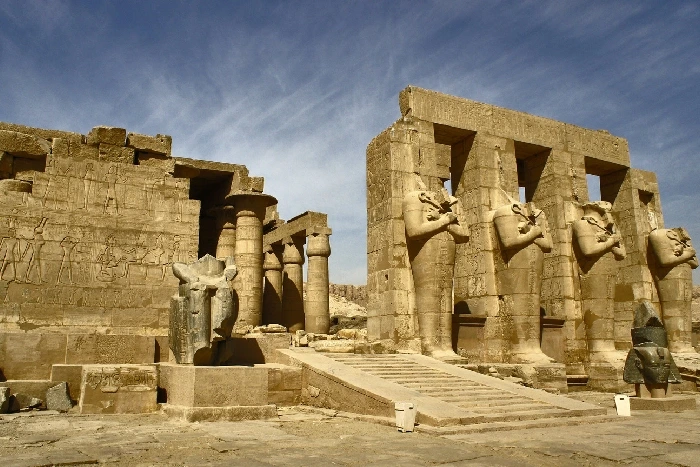
East Bank: Temples of the Living
1- Luxor Temple: The Beating Heart of the City
At the heart of Luxor City, Egypt, the magnificent Luxor Temple rises as a testament to royal power and sacred tradition. Originally constructed by Amenhotep III and later expanded by Ramesses II, the temple was not solely dedicated to the gods—it was a ceremonial space where the divine nature of kingship was affirmed and renewed. During the grand Opet Festival, the temple became a stage for one of ancient Egypt’s most important rituals, uniting gods and pharaohs in a symbolic journey of rebirth and harmony.
Today, Luxor Temple remains one of the most captivating Luxor attractions. As evening falls and the temple is bathed in golden light, its towering columns and statues take on a dreamlike glow—inviting visitors to experience the city’s ancient soul through an enchanting night tour or a quiet riverside walk.
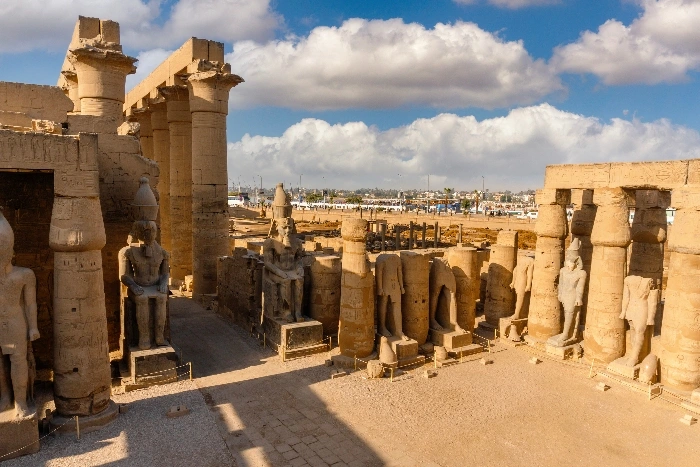
2- Karnak Temple: A Monument to Immortality
Located just north of Luxor Temple, Karnak stands as the most expansive religious complex ever built in ancient Egypt—a vast and awe-inspiring site that evolved over nearly 2,000 years. Spanning more than 200 acres, Karnak was dedicated primarily to the Theban Triad: Amun-Ra, his consort Mut, and their son Khonsu. Successive pharaohs added to its splendor, each leaving a mark on what became a sacred city within a city.
Among its most iconic features are:
The colossal Great Hypostyle Hall, with 134 towering columns arranged in perfect symmetry
- The Sacred Lake, once used for ceremonial purification by temple priests
- The majestic obelisks of Hatshepsut and Thutmose I, symbols of divine authority
- The Avenue of Sphinxes, a grand processional path that once connected Karnak to Luxor Temple
Even today, Karnak remains a highlight of Luxor sightseeing—a place where visitors can wander through layers of history, marvel at ancient engineering, and feel the spiritual weight of a site that once served as the earthly home of the gods.
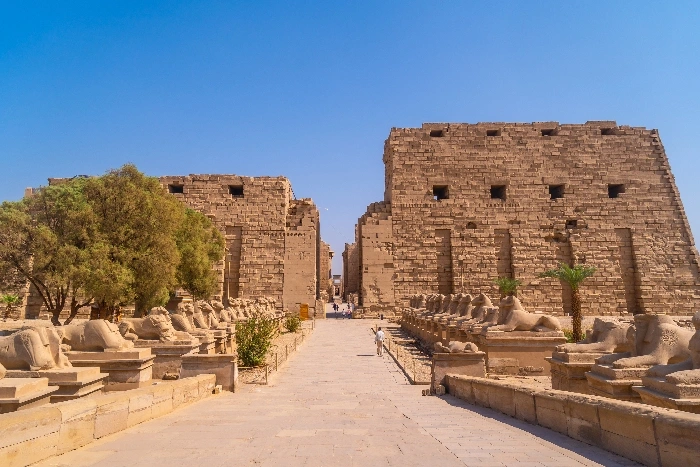
West Bank: City of the Dead
1- Valley of the Kings: Where Pharaohs Sleep
Hidden within the arid cliffs of the West Bank, the Valley of the Kings is one of the most legendary necropolises of the ancient world. This secluded desert valley served as the final resting place for over 60 New Kingdom pharaohs, their tombs carved deep into the rock to protect their journey into the afterlife. Among them lies the famous tomb of Tutankhamun, whose discovery in 1922 captivated the world and reignited global fascination with ancient Egypt.
Tombs worth visiting:
- KV62 – Tomb of Tutankhamun
- KV17 – Tomb of Seti I, notable for its exquisite wall art
- KV5 – A massive tomb for the sons of Ramesses II
Each visit is like descending into the afterlife as imagined by the ancients.

2- Temple of Hatshepsut: Majesty in Stone
Carved into the cliffs at Deir el-Bahari, this mortuary temple was built by Egypt’s most celebrated female pharaoh. Designed to honor Amun-Ra and legitimize her reign, it blends architectural genius with natural beauty. A must-see for anyone interested in royal power and innovation.
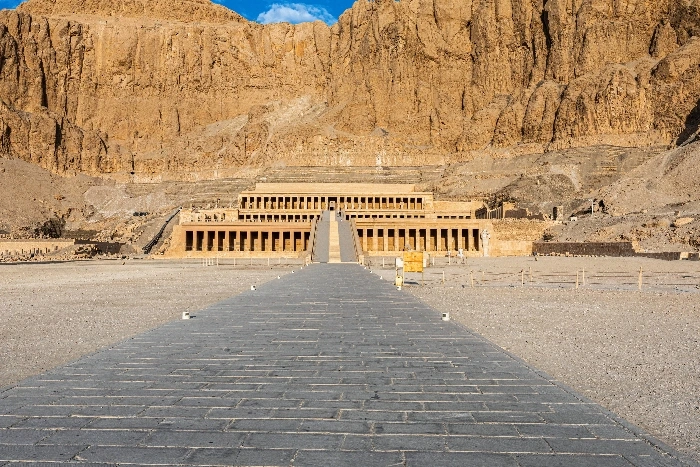
3- Valley of the Queens and the Tombs of Nobles
Not far from the Valley of the Kings lies the Valley of the Queens, where the wives and children of pharaohs were laid to rest in beautifully decorated tombs. The most renowned is the Tomb of Queen Nefertari, consort of Ramesses II, celebrated for its vibrant colors, intricate scenes, and celestial imagery—widely considered one of the finest tombs in Egypt.
Equally captivating are the Tombs of the Nobles, which provide a more personal glimpse into daily life in ancient Luxor City. Through detailed inscriptions and art, these tombs tell the stories of officials, artisans, and priests, offering a human connection to the grandeur that defined the era.
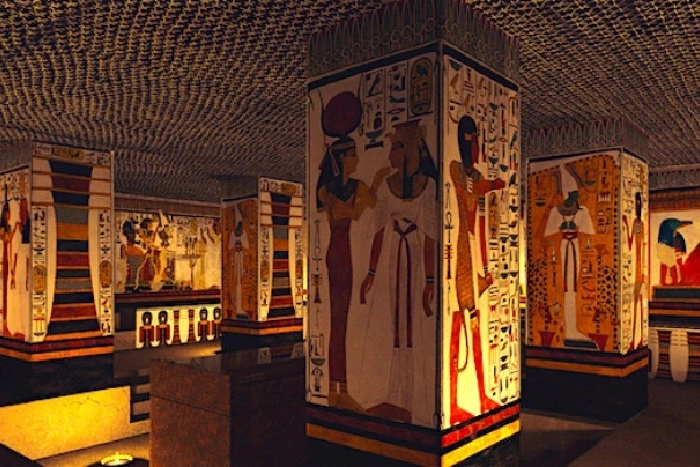
Modern Luxor: Life Along the Nile
1- A City Living with Its Past
Modern Luxor City is a vibrant blend of ancient heritage and everyday life, where history isn’t just preserved—it’s lived. The city’s relaxed pace and walkable streets invite exploration, from bustling souks filled with colorful spices and handcrafted goods to quiet corners where locals greet visitors with warmth and hospitality.
Along the scenic Nile corniche, traditional feluccas drift peacefully on the water, echoing a rhythm as old as the river itself. Unlike the energy of Cairo, Luxor moves with a timeless grace—offering travelers the chance to not only witness history, but to feel a part of it.
2- Getting There and Getting Around
Luxor City, Egypt is easily accessible by air, train, or road, with many travelers choosing scenic Nile River cruises between Cairo, Luxor, and Aswan. Whether part of a group or private Egypt travel packages, top experiences include hot air balloon rides, sunset felucca sails, Karnak’s sound and light shows, and expert-led tours by Egyptologists—making travel here as enriching as the destination itself.
3- Preservation and Challenges
Though Luxor City continues to inspire awe with its ancient splendor, it also faces growing challenges. The impact of mass tourism, environmental changes, and natural erosion poses serious threats to its fragile monuments and archaeological sites. In response, UNESCO and Egyptian authorities are working together to safeguard this priceless heritage—implementing conservation projects, promoting sustainable tourism, and carefully balancing public access with long-term preservation. The goal is clear: to ensure that future generations can experience Luxor’s legacy just as vividly as we do today.
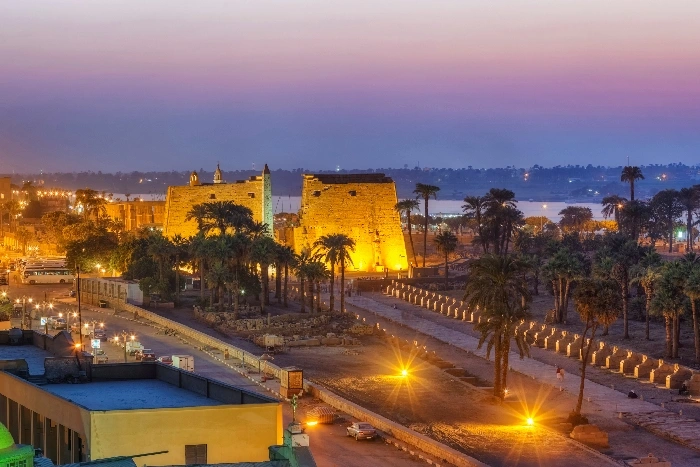
Conclusion: Why Luxor Captures the Soul
Luxor City is not merely a place to visit—it's a profound journey into the heart of Egypt's ancient spirit. Every temple, tomb, and carved inscription offers a living connection to stories told across millennia. Whether drifting along the Nile River, standing in awe beneath the massive columns of Karnak, or descending into the quiet depths of a royal tomb, Luxor surrounds you with a sense of wonder that lingers long after you leave.
From grand rituals to traces of daily life, Luxor attractions speak to both the soul and the intellect. Here, history doesn’t just belong to the past—it breathes in the present, inviting each visitor to become a small part of Egypt’s eternal story.
FAQs about Luxor City, Egypt
1- What is Luxor City famous for?
It's known for its ancient temples, royal tombs, and archaeological wonders.
2- Is Luxor worth visiting?
Absolutely—it's one of the richest cultural and historical destinations in Egypt.
3- What are the top Luxor attractions?
Karnak Temple, Valley of the Kings, Luxor Temple, and the Temple of Hatshepsut.
4- How do I get to Luxor from Cairo?
You can fly, take a train, or join Nile River cruises for a scenic route.
5- When is the best time to visit Luxor?
October to April offers the best weather for sightseeing.
6- Is Luxor safe for tourists?
Yes, it’s generally safe with a strong tourist infrastructure.
7- Can I see everything in one day?
It's possible, but a two- or three-day stay is ideal to enjoy the sites fully.
8- Are guides available at the sites?
Yes, many certified Egyptologists offer tours as part of Egypt travel packages.
9- Can I ride a hot air balloon in Luxor?
Yes, it's one of the most popular experiences over the West Bank.
10- Is the Valley of the Kings open to visitors?
Yes, several tombs are open on a rotating basis to preserve them.
11- What should I wear when visiting temples?
Light clothing, comfortable shoes, and respectful attire for religious sites.
12- Do I need a ticket to visit Karnak and Luxor Temples?
Yes, each site requires a separate entry ticket.
13- Are there restaurants near the temples?
Yes, especially around the East Bank and along the Nile.
14- Is photography allowed inside the tombs?
Sometimes, but it often requires a special ticket.
15- What souvenirs can I buy in Luxor?
Papyrus art, alabaster carvings, spices, and handmade jewelry.
16- Can I visit Luxor as part of a cruise?
Yes, many Nile River cruises stop in Luxor for guided sightseeing.
17- Are there luxury hotels in Luxor?
Yes, from boutique lodges to 5-star hotels overlooking the Nile.
18- Is it hot in Luxor?
Summers can be extremely hot, so plan accordingly.
19- What languages are spoken in Luxor?
Arabic is the main language, but English is widely spoken in tourist areas.
20- Is tipping expected in Luxor?
Yes, tipping is customary and appreciated for services.
From Karnak to the Valley of the Kings, explore Luxor City in style with Egypt travel packages and scenic Nile River cruises. Discover Egypt like never before—book now!

Happy Travellers with Cairo Nile Cruise!
Take a look at our top Egypt Tours reviews, where you will find firsthand insights from our very own Intrepid travellers.






